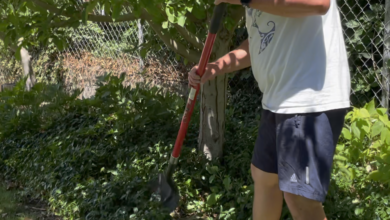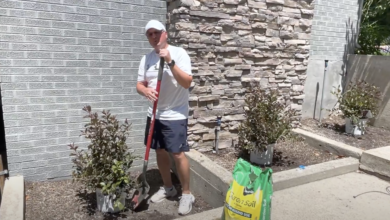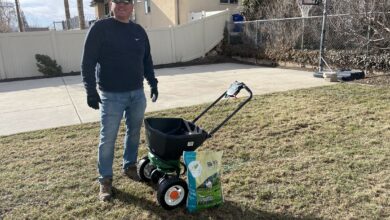The Art Of Power Raking/Dethatching & Why Your Lawn Needs It

Revive Your Lawn! The Art of Power Raking/Dethatching & Why Your Lawn Needs It
Taking care of your lawn is a great way to boost your home’s curb appeal, but it requires regular maintenance to look its best. One of the most important steps you can take to ensure a healthy lawn is power raking or dethatching. In this blog post, we’ll explore why this technique is essential for your lawn’s health and how to do it correctly.
What is Power Raking/Dethatching?
Power raking or dethatching involves using a specialized machine to remove the layer of dead grass, leaves, and other debris that can build up on your lawn over time. This layer, also known as thatch, can prevent water and nutrients from reaching the soil, which can harm your grass’s root system.
Why Your Lawn Needs Power Raking/Dethatching?
If you neglect to remove thatch, your lawn may suffer from a range of issues, including:
- Poor water absorption: Thatch can act like a barrier, preventing water from reaching the soil and depriving your grass of the hydration it needs to thrive.
- Nutrient deficiency: The layer of dead organic material can also prevent essential nutrients from penetrating the soil, leading to nutrient deficiencies that can weaken your grass and make it more susceptible to disease.
- Pest infestations: Thatch can provide a cozy home for pests like insects, rodents, and fungi that can damage your lawn.
How to Power Rake/Dethatch Your Lawn?
Power raking or dethatching is a relatively simple process that you can do yourself with the right equipment. Here are the steps you should follow:
- Choose the Right Time: The best time to dethatch is during the growing season when your grass is actively growing. Avoid dethatching when the grass is dormant or stressed, as this can cause further damage to the lawn.
- Mow the Lawn: Before you start, you’ll want to mow your lawn to a shorter height than usual. This will make it easier to remove the thatch without damaging the grass.
- Water the Lawn: Watering the lawn a day before dethatching will soften the soil and make it easier for the machine to penetrate the ground.
- Adjust the Blade Height: Adjust the blade height of the dethatching machine according to the thickness of the thatch. Set the blades too low, and you risk damaging the roots of your grass.
- Start Dethatching: Begin dethatching your lawn, making sure to overlap your passes to ensure you remove all the thatch. Depending on the size of your lawn, this could take several hours.
- Remove the Debris: After you’ve finished dethatching, you’ll need to remove the debris from your lawn. A leaf rake or lawn sweeper works well for this task.
Knowing when your lawn needs power raking or dethatching is just as important as knowing how to do it. Here are some signs to look out for that indicate it’s time to remove thatch from your lawn:
- Thatch Build-Up: If you notice a thick layer of dead grass, leaves, or other debris on your lawn’s surface, it’s likely time to dethatch. You can check by taking a close look at the soil’s surface. If you see more than half an inch of debris, it’s time to take action.
- Difficulty Watering or Fertilizing: If you find that your lawn is not absorbing water or fertilizer as well as it used to, it could be a sign that the thatch layer is too thick. Water and fertilizer can’t penetrate the layer of dead organic matter, leaving your grass thirsty and malnourished.
- Bare or Thin Patches: If you notice bare or thin patches on your lawn, it could be a sign that the thatch layer is preventing the grass from getting the nutrients it needs. Power raking or dethatching can help to stimulate new growth and improve overall grass health.
- Increased Pest Activity: If you notice an increase in pest activity on your lawn, it could be because the thatch layer is providing a cozy home for insects and rodents. Dethatching can help to disrupt their habitat and make your lawn a less hospitable place for them to live.
Conclusion
Regular power raking or dethatching can help to keep your lawn healthy and thriving. By removing the layer of dead organic matter, you’ll help your grass get the water, nutrients, and oxygen it needs to grow strong and healthy. Pay attention to the signs that your lawn needs dethatching and make it a regular part of your lawn maintenance routine. With a little effort, you’ll enjoy a beautiful, green lawn for years to come.




